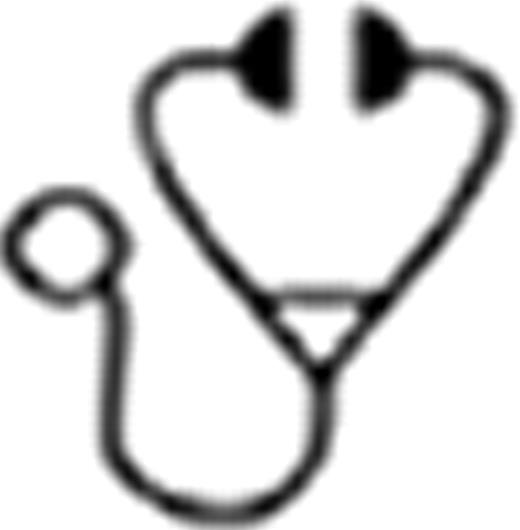Abstract
Abstract 606 FN2
FN2
Recent studies have demonstrated that about 40% of very highly selected CML-CP pts treated with imatinib achieve durable CMR and may be able to cease therapy without disease recurrence. However, most CML pts don't achieve CMR on imatinib even with long-term therapy. Results from ENESTnd demonstrated that significantly more patients achieved MMR (≤ 0.1%IS), CMR4 (≤ 0.01%IS), and CMR4.5 (≤ 0.0032%IS) with nilotinib vs imatinib by 12, 18, and 24 months (mo). No pt in ENESTnd who achieved CMR4.5 has progressed to AP/BC. In this study we asked whether pts on long-term imatinib would be more likely to achieve undetectable BCR-ABL levels if they switched to nilotinib, allowing for participation in potential cessation studies in the future. Methods: This open label, 1:1 randomized, prospective, multi-center, phase 3 study enrolled 207 pts with CML-CP who had achieved a complete cytogenetic response (CCyR) but were still BCR-ABL positive by RQ-PCR after ≥ 24 mo on imatinib. CMR (primary endpoint) was defined as undetectable BCR-ABL by RQ-PCR where there was no detectable BCR-ABL with a sample sensitivity of ≥ 4.5-logs. CMR4 and CMR4.5 were defined as BCR-ABL levels of ≤ 0.01% and ≤ 0.0032% expressed on the International Scale (IS), respectively and included patients with undetectable BCR-ABL levels with high sample sensitivity (4 or 4.5 logs). Patients were randomized to nilotinib 400 mg BID vs continuing imatinib 400 or 600 mg daily (same dose as at study entry.) The randomization was stratified by prior use of IFN (none, ≤ 12 mo, > 12 mo) and prior duration of imatinib therapy (> 36 mo or ≤ 36 mo). The primary endpoint was the rate of confirmed best cumulative CMR by 12 mo of study therapy with nilotinib or imatinib. Secondary objectives included the kinetics of CMR at different timepoints, duration of CMR, progression-free survival, and overall survival in both arms. During the study, RQ-PCR for BCR-ABL was performed at baseline (BL) and every 3 mo and expressed on the IS in national reference laboratories in Australia, Brazil, and Canada. For this report: BL, 6 mo, and 12 mo results were analyzed in a central laboratory in Australia. Assessment of the primary efficacy endpoint has not been completed for 2% of the randomized pts; unblinded data will be available for all pts and will be presented by treatment arm. Results: BL results were available for 205/207 randomized pts. Overall, 56% of pts had no prior IFN exposure, while 21% and 23% had IFN exposure of ≤ 12 mo or > 12 mo, respectively; 81% of pts had been on imatinib > 36 mos. At BL, 153 pts (74%) were known to be in MMR and 54 pts (26%) had < MMR (including 2 pts with missing PCR samples); 53 pts (26%), and 20 pts (10%) had CMR4 or CMR4.5 (with detectable BCR-ABL) at BL, respectively. Overall, 67 pts (32%) had at least a half-log reduction in BCR-ABL levels from BL by 12 mo. Of the 52 pts (25%) known not to have MMR at BL, 24 pts (46%) achieved MMR or better by 12 mo in the study. To date, no pt experienced a loss of MMR or CCyR on study. By 12 mo, 50% of pts with a molecular assessment had CMR4 and 27% had CMR4.5. Of the 152 pts who did not have CMR4 at baseline, 30% had achieved CMR4 (unconfirmed) by 12 mo. Of the 185 pts who did not have CMR4.5 at baseline, 21% had achieved CMR4.5 (unconfirmed) by 12 mo. Undetectable levels of BCR-ABL transcripts (with a test sensitivity of ≥ 4.5 log), were achieved by 12 mo by 12% of pts who did not have undetectable BCR-ABL transcript levels at BL. By 12 mo, 20 (10%) pts discontinued study (none due to progression, 1 due to death). Grade 3/4 adverse events were uncommon. Conclusions: ENESTcmr is the first phase 3 randomized study in CML-CP pts to assess the achievement of CMR as the primary endpoint. Unblinded results from this ongoing study will be presented and will provide information on the ability of pts to achieve confirmed CMR on nilotinib vs imatinib following extended treatment with imatinib. These aggregate data demonstrate that 12% of pts achieved undetectable BCR-ABL levels by 12 months after study entry. This is in contrast to observations in previous trials where the increase in the proportion of pts with undetectable BCR-ABL levels over time is more gradual. Further follow-up will identify pts with sustained CMR over time, which may offer these pts an opportunity to discontinue therapy.
Hughes:Novartis: Honoraria, Membership on an entity's Board of Directors or advisory committees, Research Funding; Bristol Myers Squibb: Honoraria, Membership on an entity's Board of Directors or advisory committees, Research Funding; Ariad: Honoraria, Membership on an entity's Board of Directors or advisory committees. Lipton:Novartis Pharmaceuticals Canada Inc: Honoraria, Membership on an entity's Board of Directors or advisory committees. Leber:Novartis Pharmaceuticals: Honoraria, Membership on an entity's Board of Directors or advisory committees, Research Funding, Speakers Bureau. Spector:Novartis: Membership on an entity's Board of Directors or advisory committees. Cervantes:Novartis: Speakers Bureau; BMS: Speakers Bureau. Pasquini:Novartis: Membership on an entity's Board of Directors or advisory committees, Speakers Bureau; Bristol Myers Squibb: Speakers Bureau. Schwarer:Novartis: Honoraria; BMS: Honoraria. Mahon:Novartis: Honoraria, Research Funding. Rea:BMS: Membership on an entity's Board of Directors or advisory committees; Novartis: Membership on an entity's Board of Directors or advisory committees. Yeung:Novartis Pharmaceuticals: Research Funding; BMS Oncology: Research Funding. Kamel-Reid:Novartis: Honoraria, Membership on an entity's Board of Directors or advisory committees, Research Funding; BMS: Honoraria, Membership on an entity's Board of Directors or advisory committees, Research Funding. Reynolds:Novartis: Employment, Equity Ownership. Williams:Novartis: Employment. Szczudlo:Novartis: Employment, Equity Ownership. Branford:Novartis: Honoraria, Membership on an entity's Board of Directors or advisory committees, Research Funding; BMS: Honoraria, Research Funding; Ariad: Research Funding.
Author notes
Asterisk with author names denotes non-ASH members.

This icon denotes a clinically relevant abstract

This feature is available to Subscribers Only
Sign In or Create an Account Close Modal